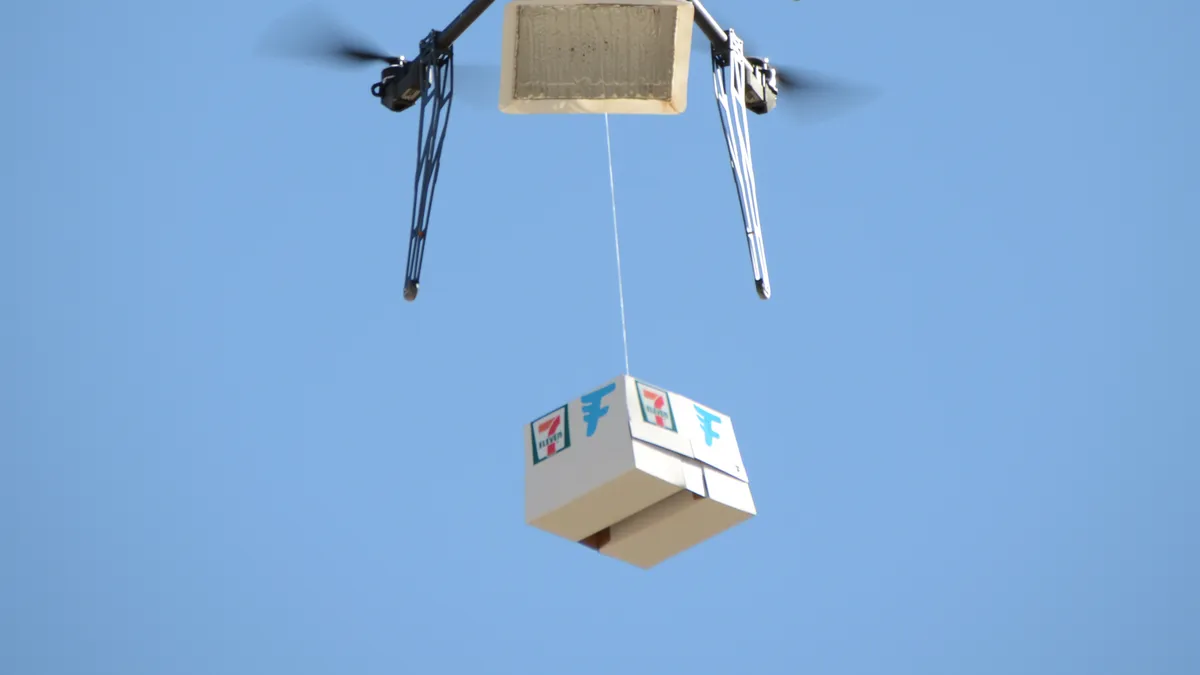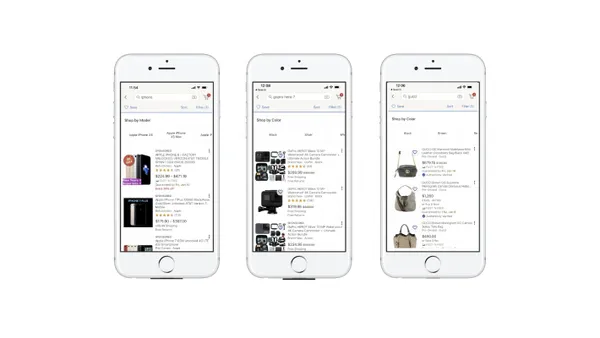Dive Brief:
-
Delivery drones are expected to amount to less than 1% of the commercial drone market by 2020, as logistical issues still need work and companies need more proof of return on investment before they make more of a commitment, according to a new market forecast from Gartner.
-
Production of drones for personal and commercial use is nevertheless increasing sharply, with drone manufacturer revenue expected to increase 34% globally to reach more than $6 billion in 2017 and more than $11.2 billion by 2020. Almost three million drones will be produced in 2017, 39% more than in 2016, according to Gartner.
-
Gartner senior research analyst Gerald Van Hoy said that eventually "we expect that delivery drones will begin finding a niche in business-to-business applications first, particularly for internal services within one company where logistics will not be such a big factor."
Dive Insight:
The initial excitement over drone delivery for retail certainly has quieted down since the Federal Aviation Administration indicated regulations covering drone delivery wouldn’t be ready until around 2020. Also, as Gartner pointed out, some logistical issues still need to be addressed, such as flight safety and how long it would take drones to return to their lift-off points and be made ready for more deliveries. It’s also true that a lot of work still needs to be done for retailers and drone delivery operators to figure out if drone delivery makes economic sense for them.
So, hearing that Gartner is forecasting delivery drones to represent a miniscule portion of the entire drone market even three years from now is neither a surprise nor a death knell for drone delivery. The drone market overall, between personal and commercial applications, appears to be taking off in a major way. The commercial market is the smaller part of the market in terms of overall shipments, though the bigger part in terms of revenue because they are usually larger drones, capable of carrying loads, and built and ruggedized for industrial applications. And delivery drones represent just one segment of that commercial market.
While Gartner’s forecast sounds on point, there are still reasons to believe the next few years will be busy ones for companies that want to deliver by drone, as well as the drone makers and operators that would support them.
For starters, retailers and others pursuing drone delivery can still make headway with their strategies even in the absence of specific FAA regulations. As we have seen 7-Eleven and Flirtey demonstrate, companies can still work with the FAA to get approval for controlled — but still large and extensive — pilot projects. If Flirtey and 7-Eleven have done this, there’s a good chance Amazon and other drone delivery dreamers will do the same sooner rather than later. Also, the only way to work out some of the logistical challenges mentioned, as well as come to some judgment about the economics of drone delivery, is by running more tests and pilot projects.
It could indeed take many years for drone delivery to become an important and broadly relied-upon component in retail sector fulfillment. Gartner’s forecast seems like a sound and realistic assessment of this market opportunity. It still is exactly that — an opportunity — and one worth investigating.













